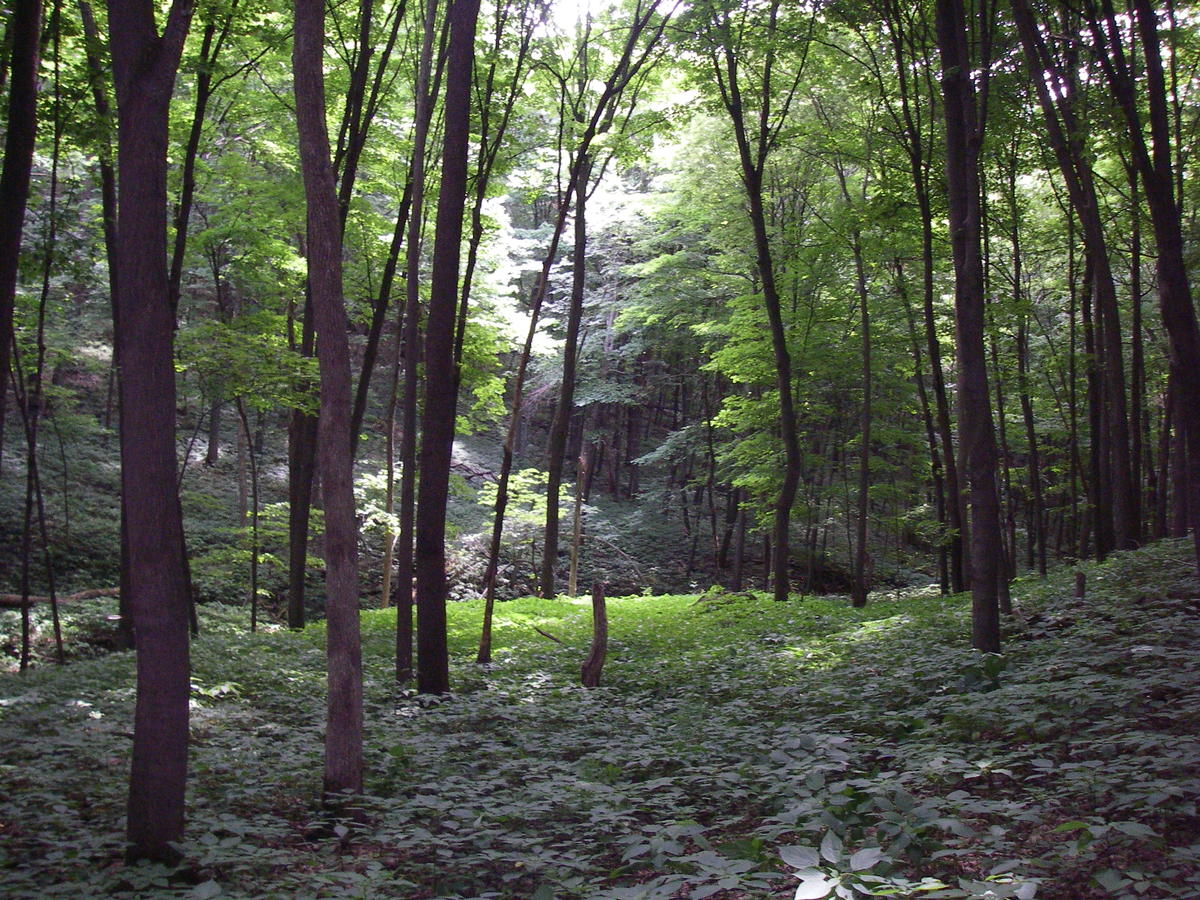Overview
This case is an example of an experimental alternative approach to complex single-tree selection silviculture. The method, referred to as "flexible diameter limit" harvesting, is designed to create similar post-treatment stand conditions to single-tree selection. As described in Miller and Smith (1993; see link below):
"A simpler partial harvest method is available in which each merchantable tree is evaluated independent of all other trees in the stand--specific rules defined in the office allow marking crews in the woods to recognize which trees to cut. The need to keep a running count of cut trees is eliminated. This partial harvest method is a combination of flexible diameter limit based on potential rate of return in each species group plus an improvement cut to improve quality of immature merchantable growing stock. Guidelines on minimum [residual basal area] are used to adjust diameter limits prior to marking to prevent overcutting and provide for sustained yield."
Silviculture Objective(s)
There are two silvicultural goals for this stand. The first goal for this stand is cover type and age class transition, from oak to northern hardwoods, two aged to uneven-aged or multiple age classes.
Given regional problems with accurately implementing single tree selection harvests (Nagel et al. 2014), the other goal for this stand is to test the “flexible diameter limit” system (Miller and Smith 1993) for application in Great Lakes northern hardwood stands.
Pre-treatment stand description and condition
Stand establishment and management history:
This stand has not been entered for a harvest since State ownership (approx. 1980). Prior to State ownership, this stand was grazed and may have had minor timber management. The current stand is heavy to sawtimber with sugar maple, Northern red oak, white ash, white oak, American basswood, and black ash dominating the composition of trees greater than 11” DBH. The upper slope have inclusions of large sawtimber big-toothed aspen as well. The pole and small sawtimber size classes are dominated by sugar maple. Seedlings and saplings are sparse and consist primarily of sugar maple, chokecherry, ironwood, bitternut hickory, common hackberry, American elm, and black cherry.
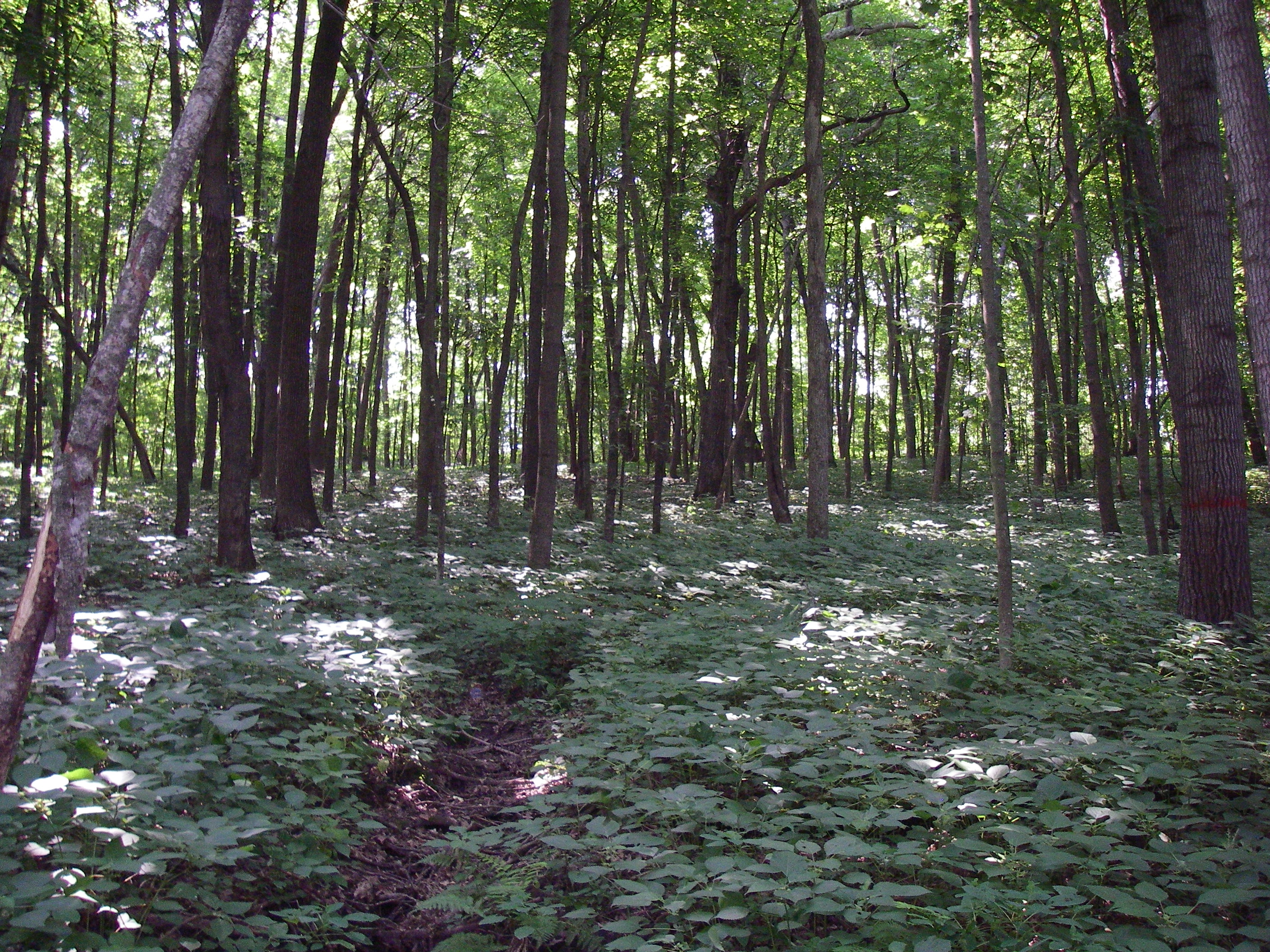
Figure 1: Pre-treatment photo 1
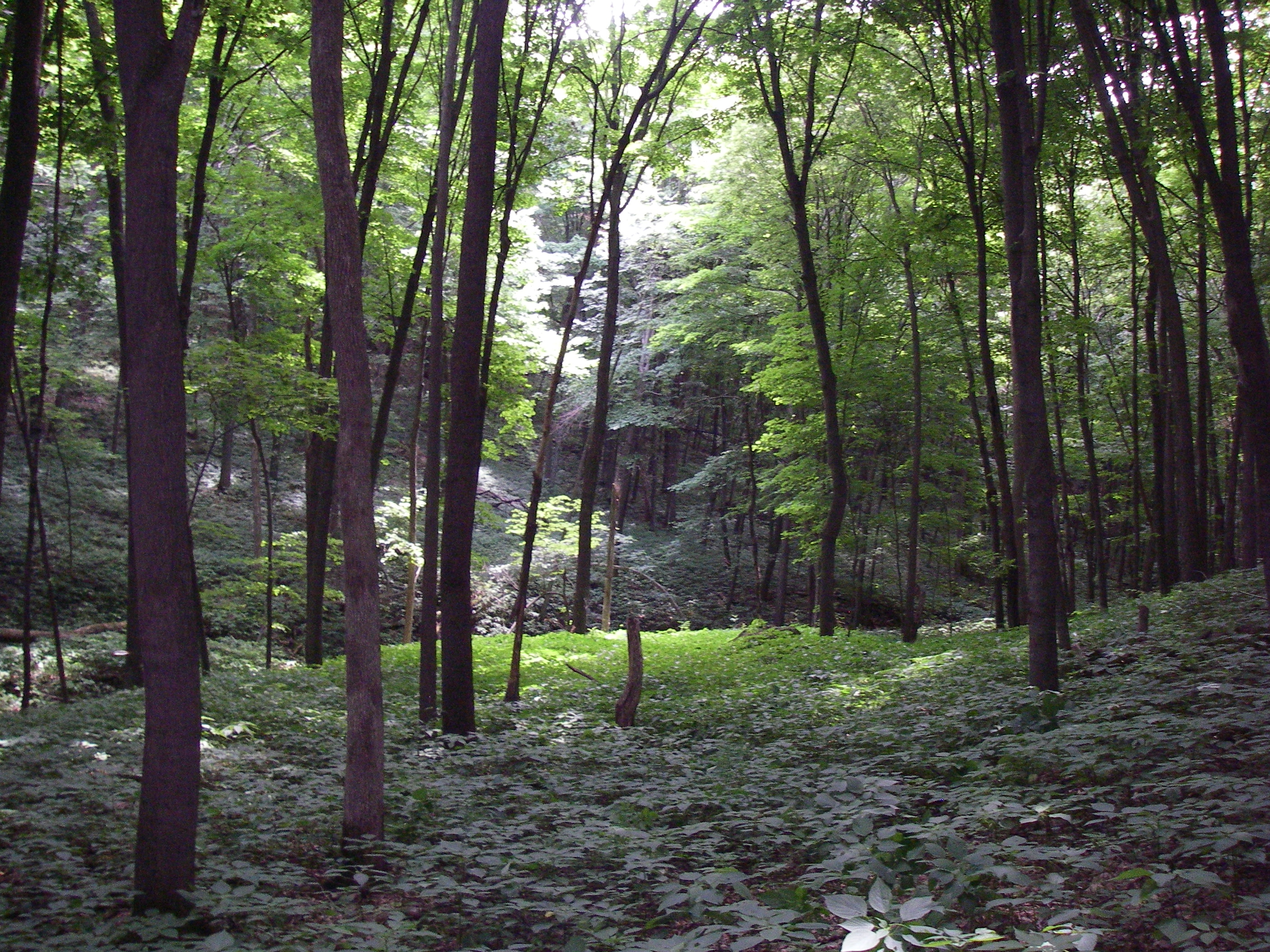
Figure 2: Pre-treatment photo 2
Current Lower Wisconsin State Riverway (LWSR) property planning calls for transition from oak to northern hardwood cover type to accommodate Lower Wisconsin State Riverway aesthetic standards as well as area / canopy coverage dependent species bird species (e.g. Cerulean warbler, Acadian flycatcher).
Pre-treatment species composition:
Refer to charts in the "Photographs" and "Supplemental Documents" sections for detailed data about pre-treatment species composition and stocking.
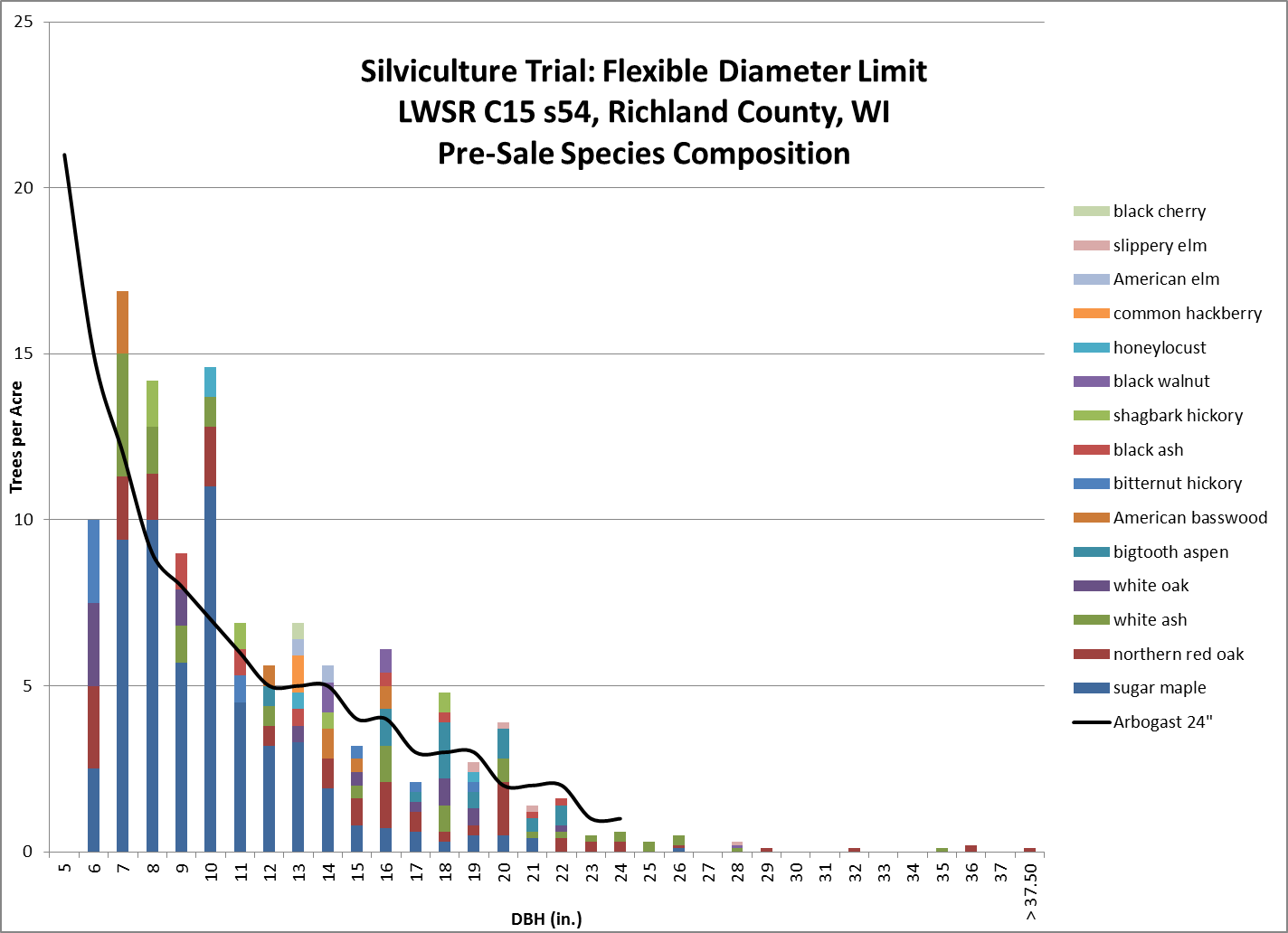
Figure 3: Pre-sale species composition
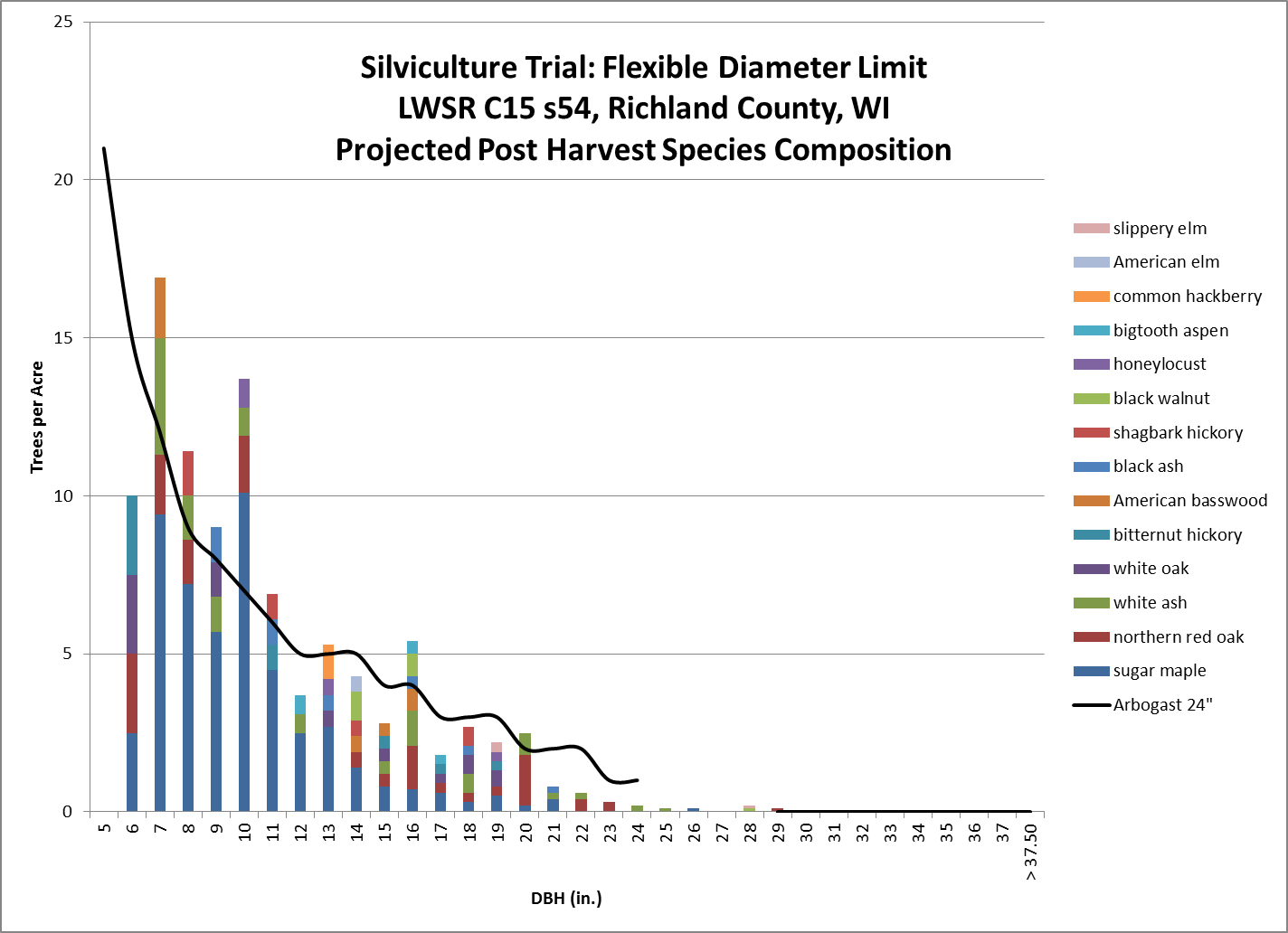
Figure 4: Projected post harvest species composition
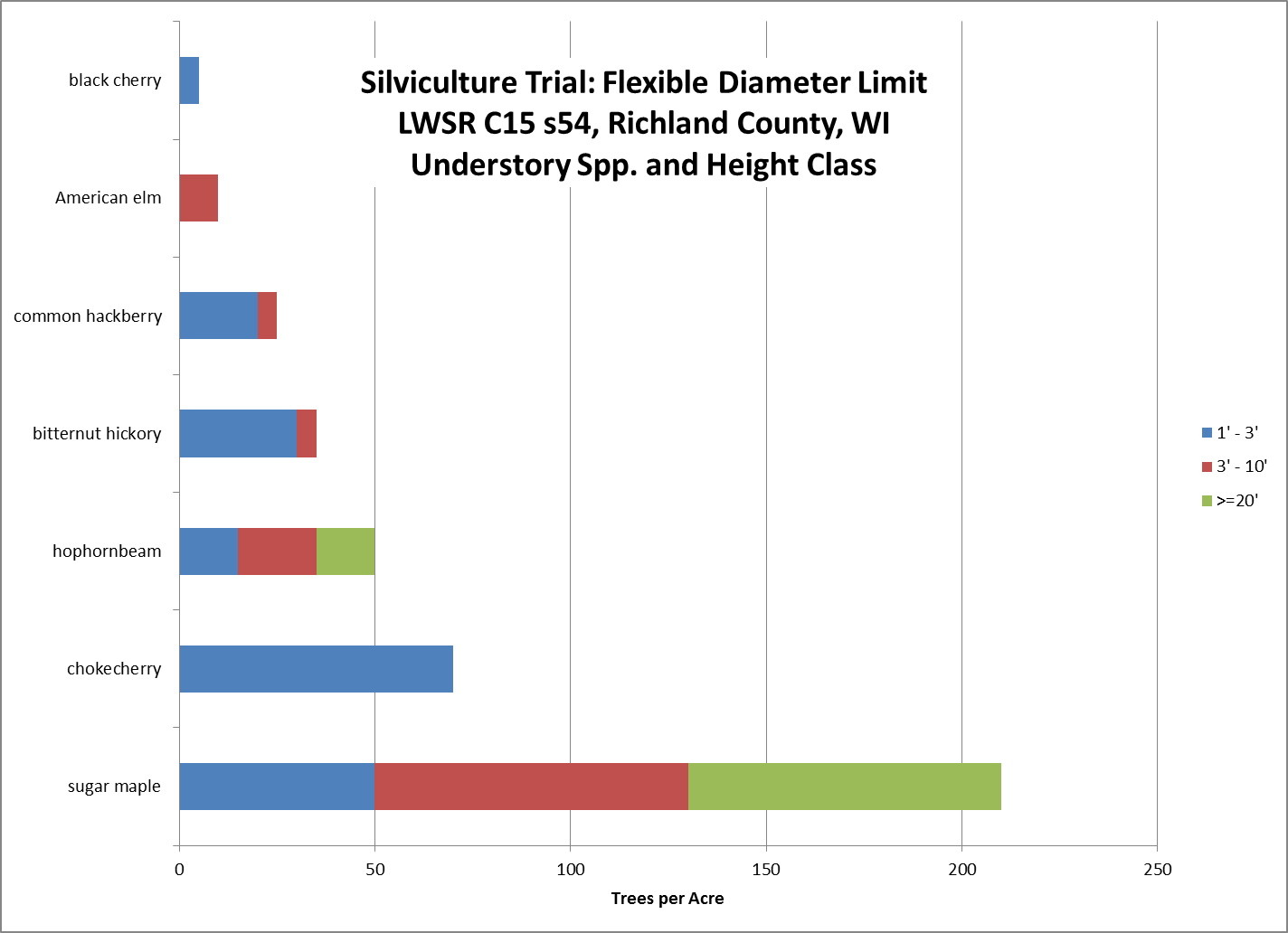
Figure 5: Pre-sale understory species and height class
Pre-treatment growth and stocking:
Refer to charts in the "Photographs" and "Supplemental Documents" sections for detailed data about pre-treatment species composition and stocking.
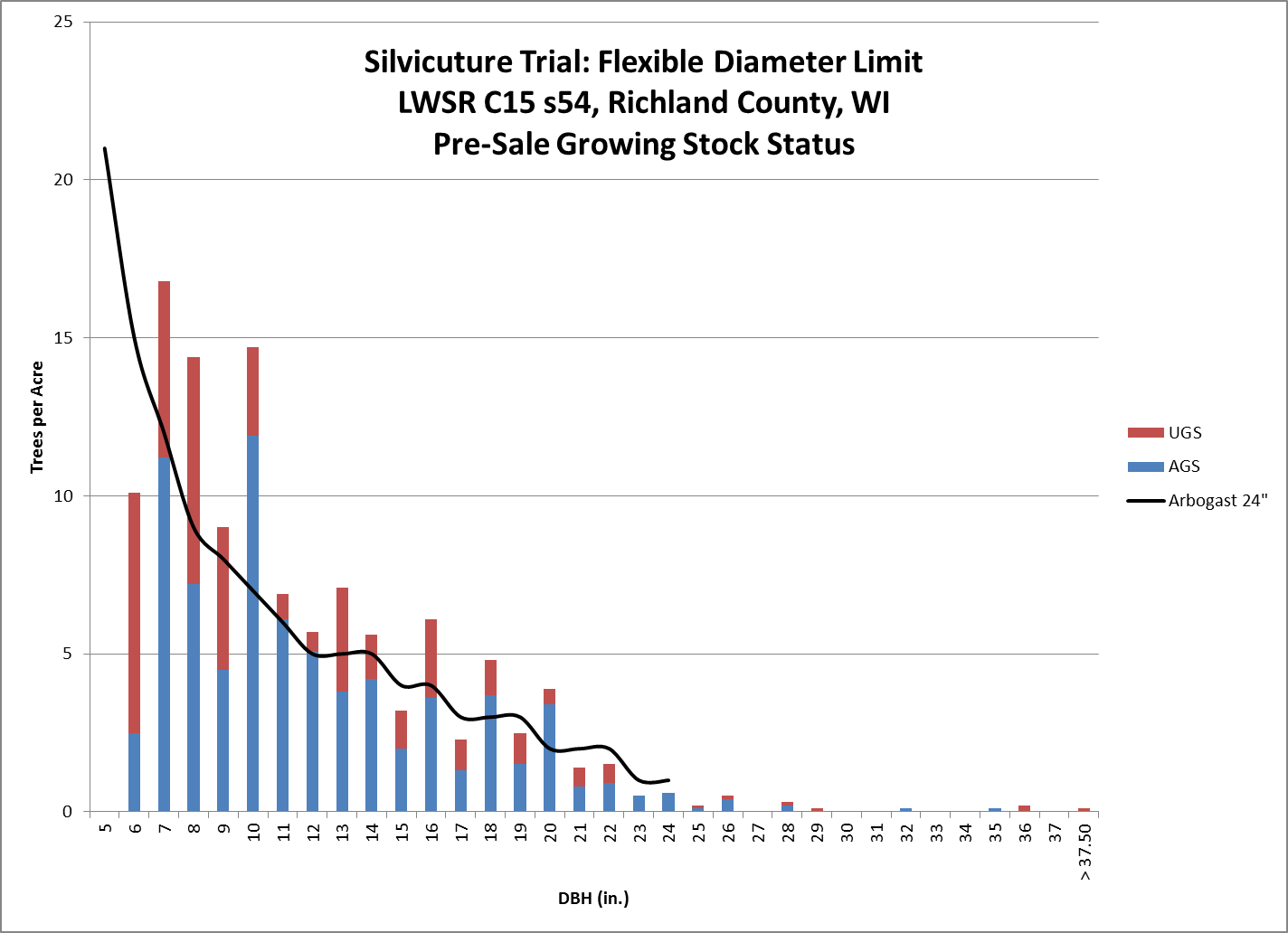
Figure 6: Pre-sale growing stock status
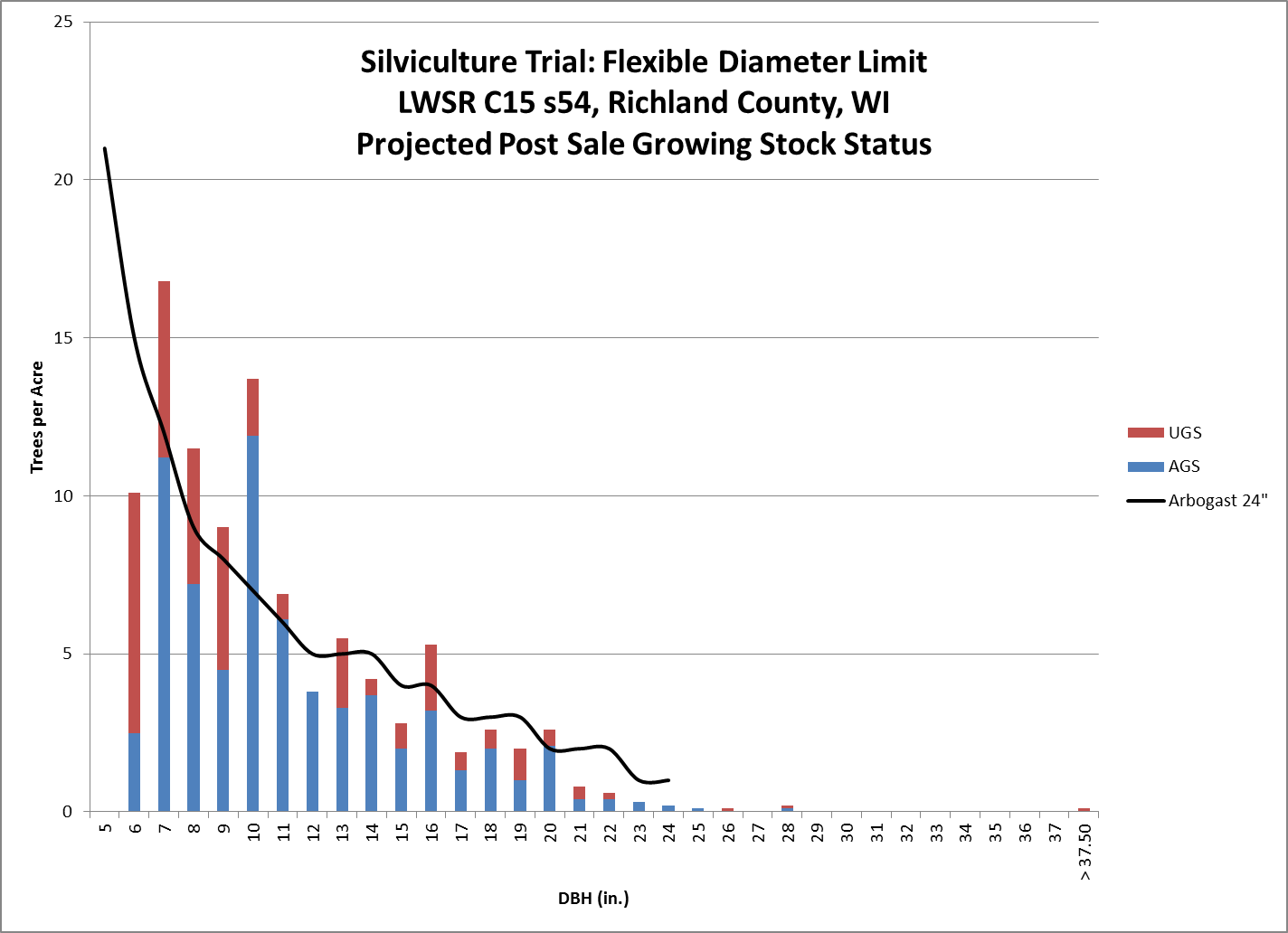
Figure 7: Projected post-sale growing stock status
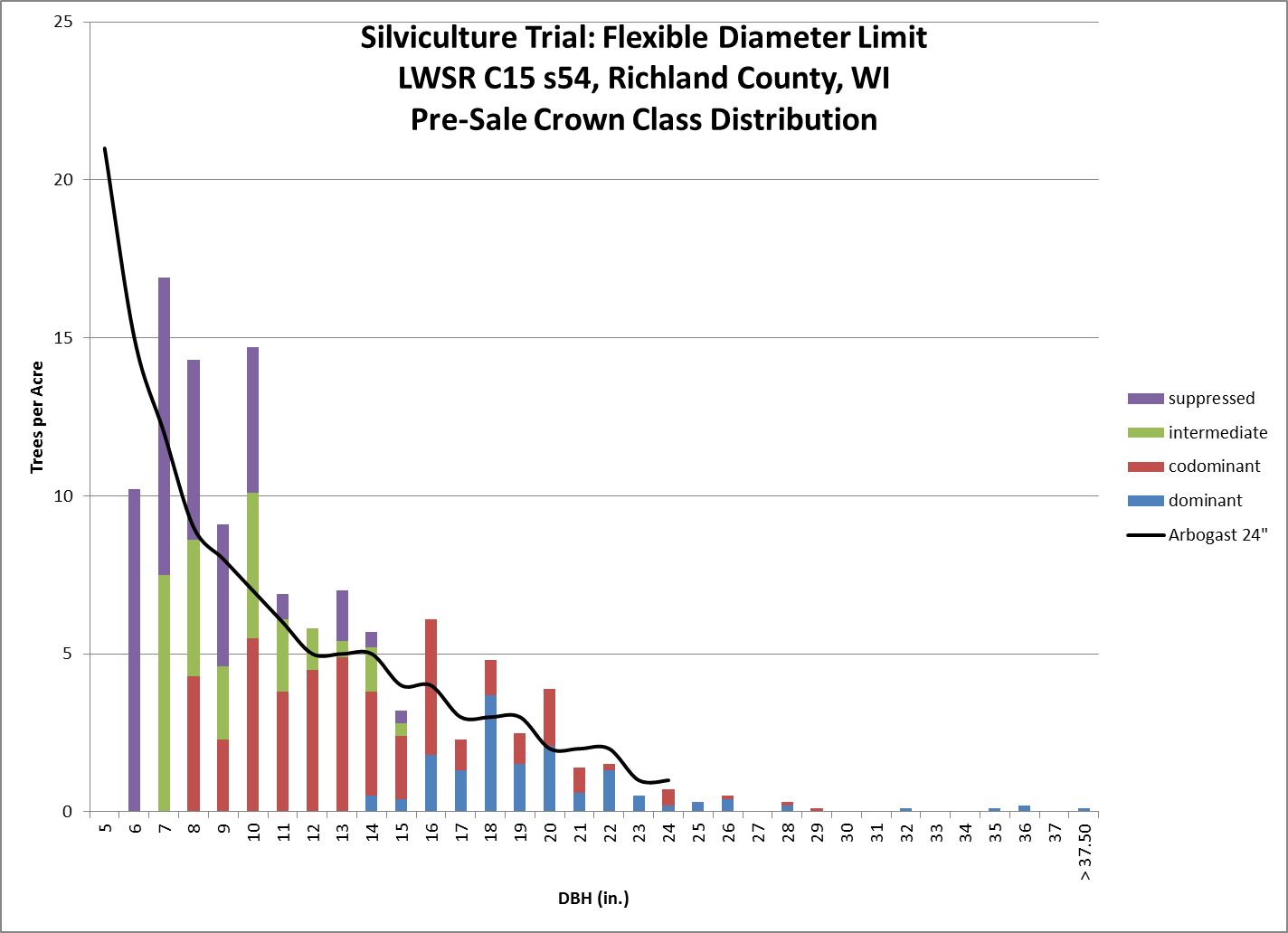
Figure 8: Pre-sale crown class distribution
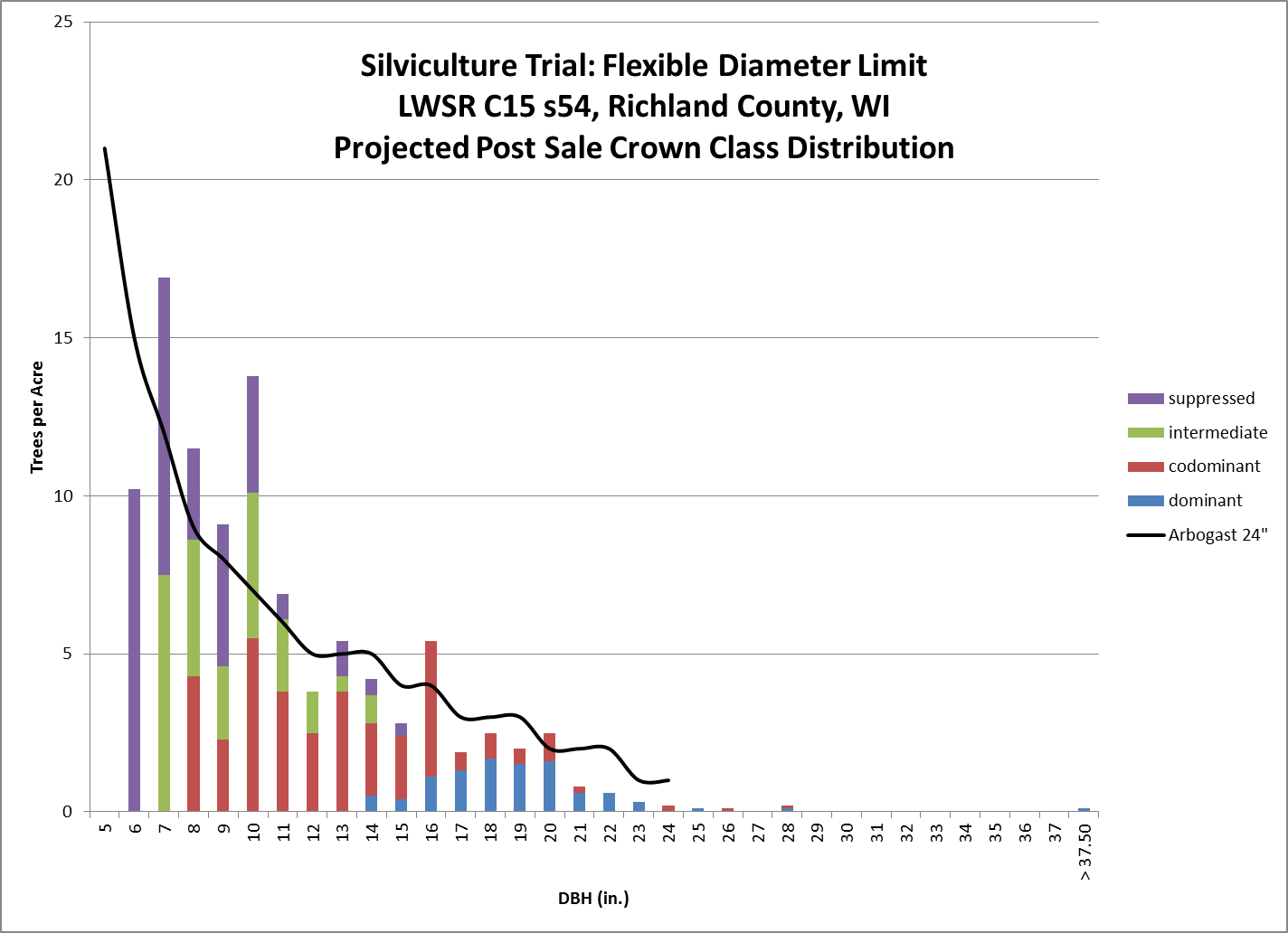
Figure 9: Projected post-sale crown class distribution
Silviculture Prescription
The management objective for this 38 acre stand is to produce both quantity and quality of sawtimber while providing habitat for mid- to late-successional forest dependent wildlife. Uneven-aged management with periodic harvests will be implemented favoring sugar maple, northern red oak, and white oak. Big-toothed aspen will be regenerated with small coppice inclusions while white ash will be discriminated against during marking. 50 BA will be retained in the sawtimber size classes with approximately 70 BA total retained in the stand. The planned entry period is 15-20 years; the stand will be managed using the “flexible diameter limit” system as an experimental alternative to single tree selection. Stand access for harvesting will be limited April 1 – August 15 to avoid disturbing rare, threatened, or endangered breeding birds.
What actually happened during the treatment
This sale was established in July 2014 and has not been harvested yet. Should be harvested before the end of 2016.
Post-treatment assessment
Post-sale inventory and assessment will consist of the following:
1. Stand tree species composition and diameter distribution relative to Arbogast curve target
2. Stand growing stock status change
3. Stocking and distribution of regeneration
Other notes
This treatment is an example of implementation of the "flexible diameter limit" technique proposed by Miller and Smith (1993) as a simpler and more practical alternative to true single-tree selection silviculture. For more on the technique, refer to the Miller and Smith article linked from the Supplemental Content section.
There is concern about heavy deer browse negatively impacting regeneration in the stand. We will be establishing deer exclosures post-harvest to assess this impact.
